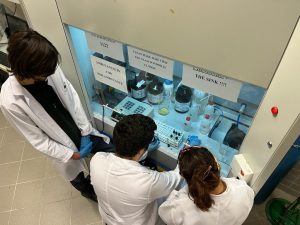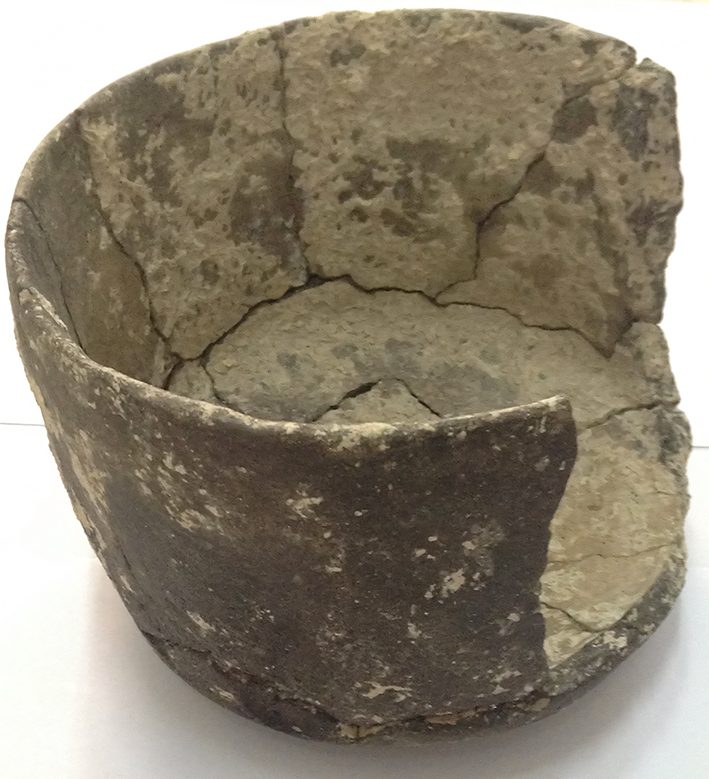Unlike the adventurous images we see in the Indiana Jones movies that have inspired many people to become archaeologists, the life of an archaeologist is often spent in pursuit of pottery. Terracotta (ceramic) pots are critical findings in archaeology as they are able to withstand the corrosive effects of thousands of years, its function can be studied due to the remains of organic compounds they contain, and may shed light on the aesthetic, artistic and religious values of the cultures they belong to, as well as providing important data on the daily life habits of societies they were used in. Seeking answers to these questions, archaeologists want to know what the pottery was used for. Some are highly decorated with colourful ornaments as they were solely used in religious rituals, some found in tombs were never used at all, while many seemingly more mundane items were used for transporting trade items or for cooking in daily life. In the old days, when chemical analyses were not around to guide scientists, the only things that gave archaeologists an idea of the possible uses of excavated pottery were their forms and design, patterns and ornaments on them, and the context in which they were found –which are still valid methods today: “Where was the pot found, in a grave or near a hearth where a fire was often lit? Does it have rare decorative elements or is it plain? What is its shape?”

Chemical analytical methods allow us to learn about the mineral properties of the clay from which a pot is made, as well as the origin of various organic compounds that remain on or in it. Was the pot used for cooking? If so, what type of foods were cooked in it? These are important questions for archaeologists, because they lead to a number of answers regarding the basic function of a pot and the daily habits of humans that lived in a certain period, such as their diets, eating habits and agricultural activities. Chemical analysis of the fatty acids that have remained inside the pots and exposed to heat can help scientists reveal which plants or animals these fatty residues belong to.
Dr. Adrià Breu Barcons and Assoc. Prof. Rana Özbal from the Department of Archaeology and History of Art at Koç University recently published an article in the Journal of Archaeological Science, gifting a new perspective and two new bio-indicators to the world of archaeology. By analysing various pieces of ceramic pottery from Neolithic (Stone Age) excavation sites dating back 7-8 thousand years in the Mediterranean Basin, from Spain to Türkiye (six samples from Türkiye’s Thrace Region and five samples from Central Anatolia), found some organic compounds that were quite puzzling as to their origin. The presence of these very-long-chain oxo fatty acids and ω-(2-alkylcyclopentyl) alkanoic acids could not be explained by the same chemical reactions known to occur when you expose oils to heat. “We had some samples with some residues we didn’t really understand,” says Dr. Breu, the study’s lead author, “We thought maybe they were coming from cooking techniques that thermally alter fat. So, we just went deep into the chemistry and tried to exactly figure out what was going on.” Indeed, they discovered two new chemical reactions that allow fats to change this way: One was the ketonic decarboxylation of saturated fatty acids and dicarboxylic acids, a reaction that yields very-long-chain oxo fatty acids. The other was the cyclization of monounsaturated fatty acids, which yielded ω-(2-alkylcyclopentyl) alkanoic acids.
To test whether these two reactions would produce the expected results, Dr. Breu and his colleagues mixed organic ingredients such as olive oil and olive leaves with ancient pottery samples and cooked them for various durations (at least an hour) at various temperatures (at least 200°C). The analysis of residues at the end of the process did reveal the presence of both components on ceramic fragments after prolonged heat treatment. Thus, they added to the literature two new bio-indicators for ancient heat-treated ceramic fragments.
Of course, says Breu, these new bio-indicators are not enough to determine whether a pot was used for cooking. Because similar organic compounds can form in oil lamps, and animal fats were sometimes used to glaze pottery in antiquity. So it’s also important exactly where and in which layers the pot was unearthed -for example, were there animal bones or plant seeds or pollen around it?

When Breu presented these two new bio-indicators at a molecular bio-archaeology conference in Estonia, he says they received a lot of interest. “Everyone was saying that they were going to check in their datasets to see if they’ve got these molecules.”
This is not the first time that heat-degraded animal fats have been found in archaeological pottery remains; the topic was first studied in the mid-1990s. Breu and his colleagues’ research, however, reveals two new types of lipids that were never detected before, opening up new debates in the archaeological world about the significance of this finding.
With the advancement of technology in recent years, the boundaries between different disciplines have become blurry. Archaeology is no longer limited to the visual analysis of pottery fragments, but now also includes biological and chemical analyses at the molecular level to reach much deeper and more detailed findings.
REFERENCES
- 1. https://www.pnas.org/post/journal-club/modern-chemistry-reveals-hot-pots-neolithic-times
- 2. https://www.sciencedirect.com/science/article/pii/S0305440323001346?via%3Dihub

